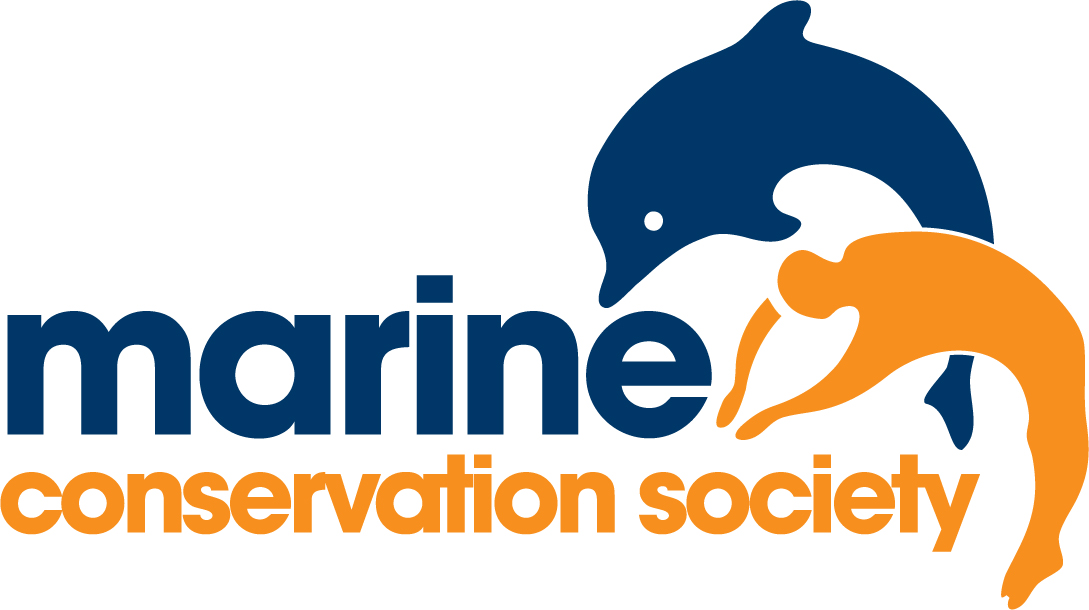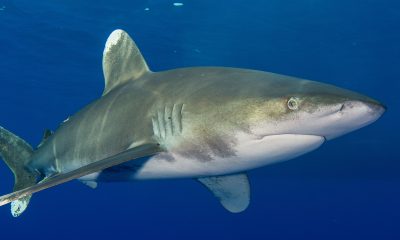News
Increased number of Good Fish Guide ratings for squid – the prawn cocktail of the 21st century

Squid from Japan gets the green light from Marine Conservation Society whilst diners should treat calamari from other fisheries with caution
Where once the prawn cocktail was a staple of the restaurant starter menu, calamari has now become a diner’s favourite. Baked, fried, popped in a paella, stewed or sautéed, squid has spread its tentacles across the menu of many high street restaurant chains.
Its rise in popularity has led the Marine Conservation Society (MCS) to increase the number of squid ratings in the latest version of its sustainable seafood advice – the Good Fish Guide (www.goodfishguide.com)
Calamari or squid? Calamari is squid! It’s an Italian word that’s used when referring to fried squid. It also sounds a bit more appealing!
There’s currently little information for squid fisheries – in the North East Atlantic for instance, squid is classified as a non-pressure stock species and so stock assessments haven’t been carried out. But as more squid is imported and it increases in popularity, MCS says it is responding to rising numbers of queries regarding its sustainability and is now providing additional ratings for some of the more commercial sources.
Squid stocks are thought to be as much affected by environmental pressures as fishing pressure, but fisheries still need to be well managed. Landings of squid worldwide have been increasing in recent years, and MCS says that despite squids’ high growth rates, short lifespan and other favourable fishery characteristics, some precautionary management is needed.
“Japanese flying squid gets a score of a 2 which means it’s on our ‘Fish to Eat’ list’, says Bernadette Clarke, MCS Good Fish Guide Manager. “This is generally due to the highly selective and low impact fishing method known as jigging used in the fishery and the fact that stock assessment has been carried out. There’s also a low vulnerability score for the species, and management measures are applied in the fishery.”
Jigging
A jig is a type of grappling hook, attached to a line, which is manually or mechanically jerked in the water to snag the fish in its body. Jig fishing usually happens at night with the aid of lures or light attraction and can happen on an industrial scale depending on the number and size of boats and/or number of jigs involved.
“On the other hand we have given both Homboldt or Jumbo squid jigged in the East Central Pacific and Argentine short fin squid, caught by purse seine or by jigging method in waters off Argentina and the Falklands, a 4 which means it’s not as sustainable and should be eaten only very, very occasionally,” says Bernadette Clarke.
“These two species are the most heavily fished squid species in the world and because fisheries occur on the high seas and are accessed by several countries their management is complicated by the occurrence of Illegal, Unregulated and Unreported (IUU) fishing. Squid also plays an important role in oceanic and coastal food webs and the impact of its large scale removal by industrial fishing is unclear.”
Purse Seine
Purse Seine and pelagic trawling for squid use big nets on an industrial scale. The trawls commonly contain small meshes which capture protected species such as sharks, marine mammals and turtles and small sized and juvenile fish species referred to as “trash fish”.
Squid are caught using light attraction from glow in the dark jigs to high wattage surface lights. It’s still not clear why squid are attracted to the lights, but the light pollution from large-scale industrial squid fisheries is such that the glow from a single fishing fleet can apparently be seen from space.
MCS says its advice is to choose squid from fisheries using low impact methods like small-scale jigging. “There’s one such fishery in Sennen Cove, Cornwall, where fishermen go out in small punts and fish for squid using jigs,“ says Bernadette Clarke. “Fisheries in UK waters tend to be small, seasonal, and non-targeted and squid is generally taken as bycatch in trawl fisheries for nephrops and other demersal whitefish species.”
Mike Lewis, Group Chief Executive of YO! Sushi says there’s been a marked rise in the popularity of squid: “Over the last few years we have seen squid based dishes like our Spicy Pepper Squid and Spicy Seafood Udon becoming increasingly more popular with higher sales. Due to our positive guest feedback and increased sales we are looking to add more sustainable squid based dishes onto our menu in the New Year.”
MCS says there will be more new ratings for squid fisheries published at the beginning of 2017.
For more from the Marine Conservation Society visit www.mcsuk.org.
Gear News
Scubapro Free Octopus Promotion 2024

Free Octopus with every purchase of a SCUBAPRO regulator system
Just in time for the spring season, divers can save money with the FREE OCTOPUS SPRING PROMOTION! Until July 31st SCUBAPRO offers an Octopus for free
with every purchase of a regulator system!
Get a free S270 OCTOPUS with purchase of these combinations:
MK25 EVO or MK19 EVO with A700
MK25 EVO or MK19 EVO with S620Ti
MK25 EVO or MK19 EVO with D420
MK25 EVO Din mit S620Ti-X
Get a free R105 OCTOPUS with purchase of the following combinations:
MK25 EVO or MK19 EVO with G260
MK25 EVO or MK17 EVO with S600
SCUBAPRO offers a 30-year first owner warranty on all regulators, with a revision period of two years or 100 dives. All SCUBAPRO regulators are of course certified according to the new European test standard EN250-2014.
Available at participating SCUBAPRO dealers. Promotion may not be available in all regions. Find an authorized SCUBAPRO Dealer at scubapro.com.
More information available on www.scubapro.com.
Blogs
Northern Red Sea Reefs and Wrecks Trip Report, Part 3: The Mighty Thistlegorm

Jake Davies boards Ghazala Explorer for an unforgettable Red Sea diving experience…
Overnight, the wind picked up, making the planned morning dive a bit bumpy on the Zodiacs to the drop point on Thomas Reef. There, we would dive along the reef before descending through the canyon and then passing under the arch before ascending the wall with a gentle drift. The site provided great encounters with more pelagic species, including shoals of large barracuda, tuna, and bigeye trevally.
Once back on the boat, it was time to get everything tied down again as we would head back south. This time, with the wind behind us, heading to Ras Mohammed to dive Jackfish Alley for another great gentle drift wall dive before then heading up the coast towards the Gulf of Suez to moor up at the wreck of the Thistlegorm. This being the highlight wreck dive of the trip and for many onboard, including myself, it was the first time diving this iconic wreck. I had heard so much about the wreck from friends, and globally, this is a must on any diver’s list. Fortunately for us, there was only one other boat at the site, which was a rarity. A great briefing was delivered by Ahmed, who provided a detailed background about the wreck’s history along with all the required safety information as the currents and visibility at the site can be variable.

Kitting up, there was a lot of excitement on deck before entering the water and heading down the shoreline. Descending to the wreck, there was a light northerly current which reduced the visibility, making it feel more like the conditions that can be found off the Welsh coast. At 10m from the bottom, the outline of the wreck appeared as we reached the area of the wreck which had been bombed, as our mooring line was attached to part of the propeller shaft. Arriving on deck, instantly everywhere you looked there were many of the supplies which the ship was carrying, including Bren Carrier tanks and projectiles that instantly stood out.

We headed around the exterior, taking a look at the large propeller and guns mounted on deck before entering the wreck on the port side to take a look in the holds. It was incredible to see all the trucks, Norton 16H, and BSA motorcycles still perfectly stacked within, providing a real snapshot in time.

Overall, we had four dives on the Thistlegorm, where for all of the dives we were the only group in the water, and at times, there were just three of us on the whole wreck, which made it even more special, especially knowing that most days the wreck has hundreds of divers. Along with the history of the wreck, there was plenty of marine life on the wreck and around, from big green turtles to batfish, along with shoals of mackerel being hunted by trevally. Some unforgettable dives.

The final leg of the trip saw us cross back over the Suez Canal to the Gobal Islands where we planned to stay the night and do three dives at the Dolphin House for the potential of sharing the dive with dolphins. The site, which included a channel that was teeming with reef fish, especially large numbers of goatfish that swam in large shoals along the edge of the reef. These were nice relaxing dives to end the week. Unfortunately, the dolphins didn’t show up, which was okay as like all marine life they are difficult to predict and you can’t guarantee what’s going to be seen. With the last dive complete, we headed back to port for the final night where it was time to clean all the kit and pack before the departure flight the next day.

The whole week from start to finish on Ghazala Explorer was amazing; the boat had all the facilities you need for a comfortable week aboard. The crew were always there to help throughout the day and the chefs providing top quality food which was required after every dive. The itinerary providing some of the best diving with a nice mixture of wreck and reef dives. I would recommend the trip to anyone, whether it’s your first Red Sea liveaboard in the Red Sea or you’re revisiting. Hopefully, it’s not too long before I head back to explore more of the Red Sea onboard Ghazala Explorer.

To find out more about the Northern Red Sea reef and wrecks itineraries aboard Ghazala Explorer, or to book, contact Scuba Travel now:
Email: dive@scubatravel.com
Tel: +44 (0)1483 411590
Photos: Jake Davies / Avalon.Red
-

 News3 months ago
News3 months agoHone your underwater photography skills with Alphamarine Photography at Red Sea Diving Safari in March
-

 News3 months ago
News3 months agoCapturing Critters in Lembeh Underwater Photography Workshop 2024: Event Roundup
-

 Marine Life & Conservation Blogs2 months ago
Marine Life & Conservation Blogs2 months agoCreature Feature: Swell Sharks
-

 Blogs2 months ago
Blogs2 months agoMurex Resorts: Passport to Paradise!
-

 Blogs2 months ago
Blogs2 months agoDiver Discovering Whale Skeletons Beneath Ice Judged World’s Best Underwater Photograph
-

 Marine Life & Conservation2 months ago
Marine Life & Conservation2 months agoSave the Manatee Club launches brand new webcams at Silver Springs State Park, Florida
-

 Gear Reviews3 months ago
Gear Reviews3 months agoGear Review: Oceanic+ Dive Housing for iPhone
-

 Gear Reviews2 weeks ago
Gear Reviews2 weeks agoGEAR REVIEW – Revolutionising Diving Comfort: The Sharkskin T2 Chillproof Suit
















